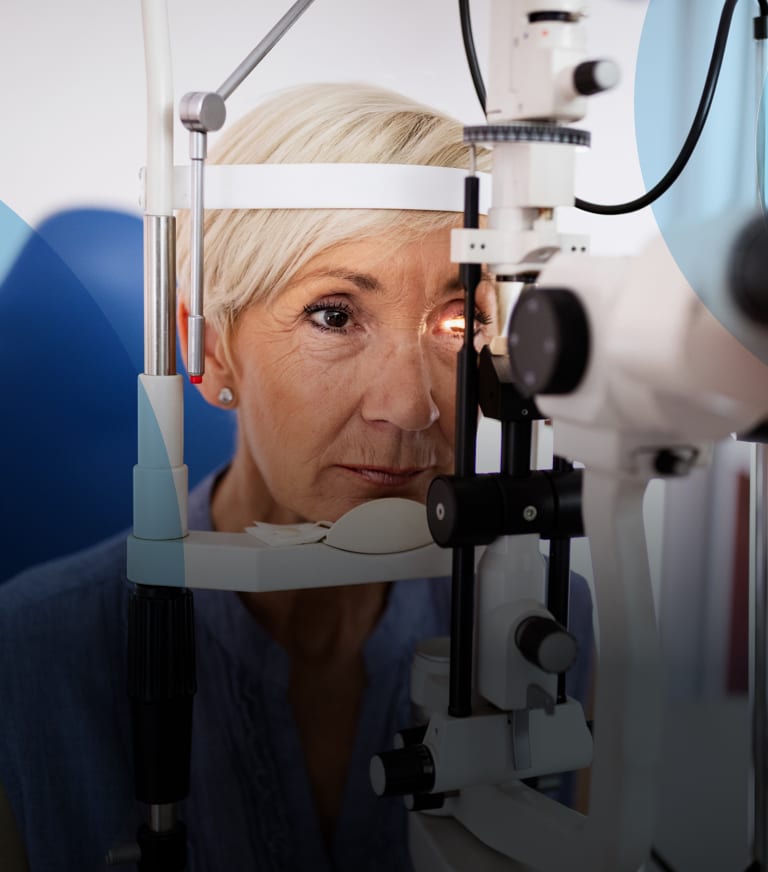Experience What’s Possible with a New Approach to Dry AMD
Dry age-related macular degeneration (dry AMD) can gradually change how you see and how you live. Recognising faces, reading, and navigating dimly lit environments often become daily challenges.
Now, there’s hope.
MacuMira is a noninvasive treatment, now available in Australia and New Zealand, designed to help improve visual function in patients living with dry AMD.
This safe, comfortable therapy is performed right in your eye care provider’s clinic and has already helped thousands of people experience clearer, brighter vision.

How MacuMira Works
Microcurrent Stimulation
MacuMira gently delivers low-level microcurrent through the closed eyelids to stimulate the retina. This therapy is designed to support retinal health and maintain or improve your vision over time. It’s designed to improve and preserve vision in patients with dry AMD.
Improved Vision
Many patients report noticing clearer vision or improved contrast within the first 10 days of treatment. Eye care providers typically recommend ongoing follow-up sessions every 3 months to maintain the effects.
Comfortable, In-Office Therapy
MacuMira does not require needles, medications, lasers, or surgery. Treatments are quick, typically 32 minutes, and most patients can return to their regular day right after their visit.
Understanding Dry Age-Related Macular Degeneration
Dry AMD affects the macula, the part of the retina responsible for central vision. Over time, this area can break down, making it harder to see clearly in the centre of your vision, even though side (peripheral) vision typically remains intact.
Daily tasks like reading fine print, recognising faces, or driving at night can become difficult or even impossible as dry AMD advances.
Regular eye exams are important for detecting the condition early. MacuMira may be able to help slow the progression of dry AMD while improving vision.
In dry AMD, the light-sensitive cells in the macula gradually break down. One of the earliest changes is the accumulation of drusen—small yellow deposits beneath the retina.
These deposits can interfere with the retina’s function and may signal the start of vision decline. Early on, dry AMD may not cause noticeable symptoms, but as it advances, many people begin to experience:
-
- Blurry or fuzzy central vision
-
- Trouble reading or recognising faces
-
- Difficulty seeing clearly in dim lighting
-
- Wavy or distorted lines
Dry AMD does not typically affect peripheral (side) vision. However, in later stages, it can result in severe central vision loss, making it harder to perform tasks such as driving, reading, or navigating daily routines independently.
Dry AMD can affect anyone, but certain factors can increase the risk:
-
- Age: Risk rises significantly after age 55
-
- Family History: Genetic factors can increase your chances
-
- Smoking: Strongly associated with earlier onset and faster progression
-
- Lifestyle: Poor diet and limited eye care may contribute
A comprehensive eye exam can reveal early signs of macular changes long before vision is affected. Eye care providers can identify drusen, retinal thinning, or other subtle markers during routine imaging. Detecting dry AMD in its earliest stages enables patients and providers to explore new treatment options, such as MacuMira.
MacuMira: A Clinically Supported Option for Patients with Dry AMD in Australia & New Zealand
For years, treatment for dry AMD was limited to lifestyle changes or nutritional supplements aimed at slowing disease progression. These options offered no way to improve vision already lost.
That is changing with MacuMira.
MacuMira is the first and only treatment of its kind available in Australia and New Zealand, offering a clinically supported way to improve visual function in dry AMD.
Our mission is to bring innovation to AMD treatment.
If there is not yet a provider near you, your current eye care professional can contact us to learn more about bringing MacuMira to their clinic.




